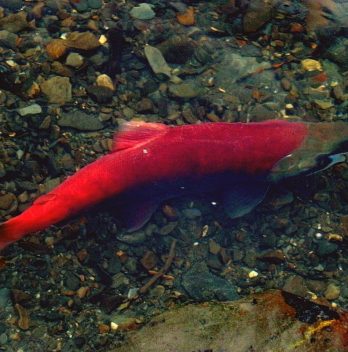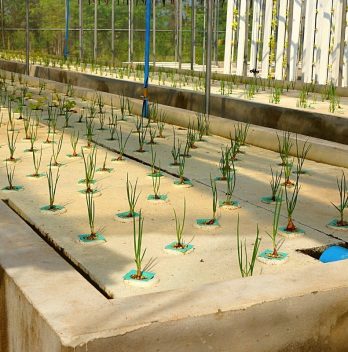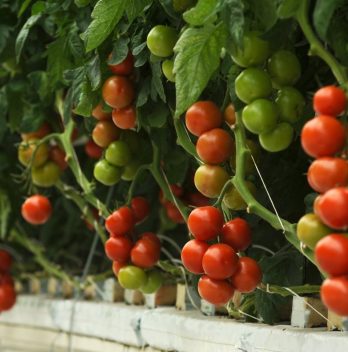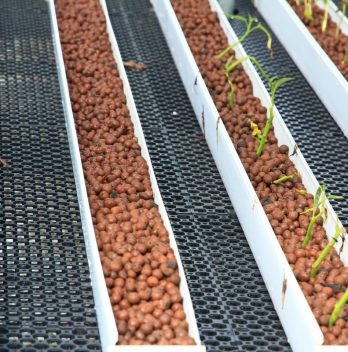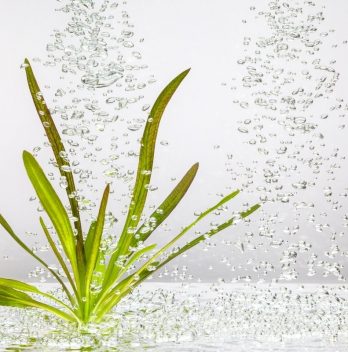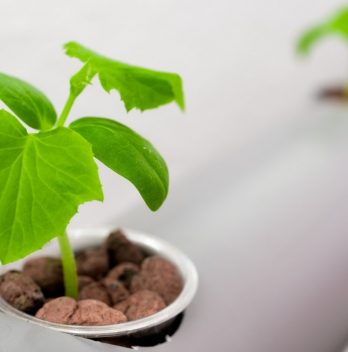Salmon is one of the most consumed foods and the most imported seafood in the US. Getting started with raising salmon at home is not so complicated with the right knowledge and we will enlighten you on this.
You can raise salmon fish at home or in your backyard pond. Therefore, this will be an amazing way of obtaining fresh and locally made salmon fish for consumption or simply raising them as pets.
Materials Needed for Raising Salmon at Home
The following materials are required to get started with raising salmon at home:
- Fish tanks or aquarium
- Incubation tray
- Styrofoam
- Water
- Salmon eggs
Tetra Aquarium 20 Gallon Fish Tank Kit
How to Raise Salmon at Home
Home fish farming is an awesome experience. One of the best ways of raising salmon at home is through the use of closed containment. Raising salmon in a solid closed tank or containment will mainly protect the eggs from pathogens or diseases.
Another benefit of raising salmon from tanks at home is there will be fewer needs for chemicals. Therefore, you enjoy your salmon fish fresh, safe, and healthier. So, here are the tips to guide you in raising salmon fish at home.
Stages
1. Incubation Stage
Growing salmon can take up to two years from the egg stage. The stages begin with the egg and they are placed in the incubation tank. Ensure you rinse the tank with water before placing your salmon eggs. You can also clean the front of the tank or aquarium to have a clear vision.
The eggs are in the incubation trays for about 6 to 8 weeks. The tank can be covered with Styrofoam to prevent light from entering allowing the egg to incubate. Put some gravel or rocks in the tank as the eggs will live under the rocks feeding on their yolk. As the eggs of salmon are allowed to hatch, ensure you monitor them as the eggs progress.
The eggs will hatch and turn into alevin and are at the alevin stage for 30 to 50 days. They prefer to be in the dark at the alevin stage.

Also, make sure you remove the eggs shells and less active eggs or dead eggs as they hatch daily. The alevin now develops into young fish called fry. You can then remove the Styrofoam after they are done hatching.
Read more about the 5 Best Hydroponic Kits You Can Find
2. Fry System
The young fish are now moved into the fry tank for a period of 6 to 7 months. In the frying system or tank, the fry is then ready for its first feeding.
3. Feeding Stage
When the fish has fed on their egg sac, you can now proceed to drop food in its tank. The fry is fed with commercial fish feeds which are made to fit the life stages of the various fish sizes. The fish feed sizes range from crumbs to pellet sizes.
4. Fingerlings Tank
They are then transferred into the fingerlings tank for 5 months.
5. Smoltification Stage
As the fish grow in size and reach about 40 grams, smoltification is induced. Notification is an advanced series in which the fish undergo a biochemical, physiological, and morphological transformation.
When smoltification has taken place, the fish are known as smolt. Salmon smolt is preferred in aquaculture or aquaponics reason being they grow faster.

6. Fish Sampling
A sampling of the salmon fish is carried out every two months to keep a good eye on their performance rate. When the fish reach 700 grams to 800 grams, they can now be moved to the grow-out tanks.
7. Growout tank
They are now about a year old and transferred to the grow-out tank. Sampling is again done every two months and they can spend 12 months or more here based on the target size you want.
8. Harvest
When your salmon fish has grown to the preferred target size of about 10 to 12 pounds, you can proceed to harvest.
Learn about Where To Buy Fish For Aquaponics System
How Much is Farm-Raised Salmon?
The price of farm-raised salmon greatly varies. Several factors influence this. These include the farm location, the size and quality of the fish, and the time of the year.
Generally, farm-raised salmon tends to be less expensive than wild-caught salmon. In 2021, the US average price of farm-raised salmon was between $7 – $12 per pound. Prices can be higher or lower depending on the specific type of salmon purchased.
You should always shop around to see where you can get the best deals. Buying in bulk and directly dealing with farmers can also save you money.
Does Farm-Raised Salmon Have Bones?
Like wild-caught salmon, farm-raised salmon can have bones. However, the fillets you buy in-store usually have no bones. The bones in farm-raised salmon also tend to be smaller and softer than those in wild-caught salmon. You’ll have an easier time removing them.
If you find bones in your salmon, you can remove them with sterile tweezers or nose pliers. Gently pull the visible bones or simply remove them as you would with any other type of fish.
Where is The Best Farm-Raised Salmon From?
The quality of farm-raised salmon varies depending on the specific farming practices used. You should always research the farm or producer before purchasing farm-raised salmon.
Many countries and regions around the world produce high-quality salmon. The top producers are:
Norway
This country is one of the world’s largest producers of farm-raised salmon. Norway is known for its high-quality fish and sustainable farming practices.
Chile
Another major producer of farm-raised salmon in Chile. High-quality fish and low production costs go hand in hand in this country.
Scotland
This country produces high-quality fish through sustainable farming projects. It’s a smaller producer of farm-raised salmon, but it makes this list nonetheless!
Canada
Several large-scale fish farming operations are located on Canada’s Atlantic Pacific coasts. This country is a major producer of farm-raised salmon.
Is Outback Steakhouse Salmon Farm-Raised?
Outback Steakhouse is part of the Bloomin’ Brands group of restaurants. This group has committed to sourcing seafood from sustainable sources and working with suppliers using responsible fishing practices. However, it is unclear whether Outback Steakhouse serves farm-raised or wild-caught salmon. The restaurant chain does not disclose information about the sources of its seafood on its website or its menus.
If you prefer one type of salmon over the other, you should ask the restaurant chain head or staff for more information before ordering. You can also consider looking for other menu items made with sustainably sourced seafood or asking the staff for recommendations.
Is Egg Harbor Salmon Farm-Raised?
Egg Harbor salmon is GMO- and antibiotic-free. It is sourced from the Faroe Islands. Salmon on these farms are responsibly raised in the North Atlantic Ocean.
Is Canadian Salmon Farm-Raised?
Some of the salmon produced in Canada is farm-raised. Canada is a big producer of farm-raised salmon and has several large-scale fish farming operations. However, not all salmon produced in Canada is farm-raised. Many fish are wild-caught in the oceans off the coast of this country.
You should always check the label or ask the supplier if you’re uncertain about the source of salmon before purchasing it. You can also look for sustainably sourced seafood certified by organizations like the Marine Stewardship Council (MSC) or the Aquaculture Stewardship Council (ASC). These certifications indicate that the product was produced responsibly and sustainably.
How Much Salmon is Farm-Raised?
Farm-raised salmon is a significant source of seafood worldwide. According to the United Nations Food and Agriculture Organization (FAO), about 70% of the global production of salmon is farm-raised.
The production of farm-raised salmon has increased significantly in recent decades, as demand for seafood has grown and wild-caught fish stocks have come under pressure. Farm-raised salmon can be produced in various locations, including coastal areas, inland areas, and offshore platforms.
Additional Note on Raising Salmon at Home
Ensure you keep the tank or aquarium at a convenient temperature that is suitable for your salmon fish. They are cold water-loving fish. So, you can make use of a refrigerating unit with a device capable of keeping track of and controlling the temperature of the tank.
Maintain a temperature of 45 degrees Fahrenheit. Note that temperatures above 55 degrees Fahrenheit can terminate the life of your salmon fish. Therefore, always keep an eye on the temperature daily.
There should also be an aerator so your tank can have an adequate oxygen supply. Always filter the water to reduce ammonia because too much ammonium can kill your salmon fish.
FAQ’s
Can salmon be kept as pets?
What about the health of salmon? Salmon are not suitable for pet keeping. They are cold blooded and have a low tolerance for stress. They should be kept in temperatures between 26-29°C. This is because they have a higher metabolic rate than other fish species. When their body temperature drops, they start to shiver and their metabolism increases. This causes a rapid increase in metabolism and the production of lactic acid. The accumulation of lactic acid causes a lack of oxygen in the blood and eventually leads to death. If you keep salmon as a pet, you should also have some experience with fish keeping.
How do you make a salmon farm?
e are going to break down the process into three parts: planning, building and operating. To start planning your salmon farm you need to look at your specific needs and what your budget will be. You also want to take into consideration how many fish you want to produce and how large they will be.
The more salmon that are produced the more space you will have to build your facility. You may also consider how big the fish will get.
The second step is to build the facility. You will need to decide on the location of your farm. You will need to make sure that the area is safe for the fish and the equipment.
You may want to look into the possibility of having a power source. This can be very important if you need to provide electrical service to the farm. You may also want to look into purchasing your own generators. These are very important when you start producing fish because the electricity may not always be available. Finally you need to consider how you will operate your farm. You will need to make sure that you have enough room to store all of the equipment and supplies that you will need. You will also need to make sure that your facilities are up to code, and that you have enough staff to run the farm. You will also need to make sure that you have enough water to keep the fish alive.
How long does it take a salmon to grow?
Salmon are anadromous fish, meaning they spawn in fresh water and live in the ocean. Salmon typically grow very fast during their first year, and then grow very slowly during their second year.
The average length of a salmon at age one is 2-3 inches long and at age two is 3-4 inches long. After age three, most salmon begin to grow more slowly, with growth rates similar to other fish species.
Why is salmon farming good?
The most important reason why we are in favour of the salmon farming industry is because it has brought about a sustainable future for wild fish stocks. It has allowed for an increase in salmon production, whilst at the same time ensuring that there is no over-fishing of wild stocks. This has led to more and more wild stocks being left to grow naturally in their natural environment, rather than being fished out and wiped from the face of the Earth.
The most famous example of this is probably the Fraser River sockeye salmon, which was once in such danger of extinction that its population was reduced to less than 10 fish. However, with the help of the salmon farming industry, it now numbers in excess of 100,000 fish, and has been left to grow naturally without being fished out.

Eunice is an enthusiastic gardener with a passion for growing beautiful flowers. She loves nothing more than spending time in her garden, tending to her plants and enjoying the outdoors. Eunice has been gardening for over 15 years and has developed a unique style of landscaping that is both practical and aesthetically pleasing. She is especially fond of growing roses and enjoys experimenting with different varieties and colors. Eunice takes great pride in her garden and often shares the fruits of her labor with friends and family. In her spare time, she enjoys reading gardening magazines and attending local horticulture events. Eunice is passionate about her hobby and is always eager to share her knowledge and experience with others.

